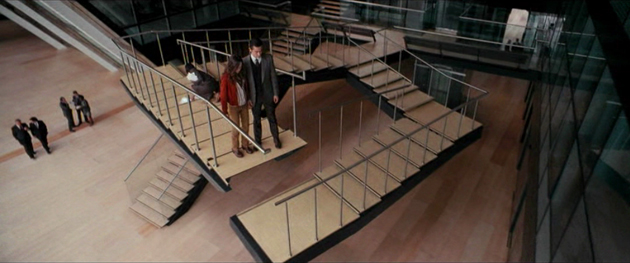Guy Hendrix Dyas

AS: Kim Sinclair worked with Spielberg on Tintin and said his interaction was mainly virtual with weekly poly-conferences- was that also your experience?
GHD: I live in Los Angeles so I’m usually in direct contact with him as I run my art department from his offices. However as one of the busiest people in Hollywood I know he uses the system a lot.
AS: You also worked with Spielberg on Indiana Jones and the Kingdom of the Crystal Skull. You designed many elaborate sets- were there many challenges?
GHD: I think one of the challenges was to design a film that fit in stylistically with the others while also showing the passing of time as our story takes place in the late 50s. Like many I’m a huge Indiana Jones fan and beyond the fact that I was really looking forward to working with Steven Spielberg for the first time there was the added excitement of being a part of the Indiana Jones adventure. It’s definitely an experience that brings out the kid in you and it was fun to express that through our designs.
AS: David Warren worked with Terry Gilliam on the Imagination of Dr. Parnassus and said Gilliam was very hands-on and provided a lot of visual input- was this also your experience on the Brother’s Grimm?
GHD: Terry’s films are some of my favorite films so I knew that being able to work with him would be an incredible experience, especially since he’s been a designer himself. I still remember the impact of seeing Brazil as a student at the Royal College of Art. It was being shown as part of a special film series called “Grand illusions”. I think it’s the film that first opened my eyes to the art of Production Design. Working with Terry is exactly what you’d imagine, he has endless creative energy, he draws amazingly well and it was fun to be able to exchange sketches with him.
AS: Going from Terry Gilliam’s imagination on the Brother’s Grimm to Elizabethan England in Elizabeth: The Golden Age to Spielberg’s Indiana Jones to Angora to Inception and now to Robopocalypse, is there anything in your work that remains constant or is it a radically different experience every time?
GHD: I think one of the most important goals of a production designer is to satisfy a story and a director’s vision, so by definition this means that every film should be a completely new experience. Directors are really the ones guiding the way and our aim is to bring their visions to life. I hope my designs appear as different and varied as the films and stories being told. If there’s a constant it’s perhaps the fact that every film is a learning process and that for designers it’s nice to be able to take those experiences and the things you feel were the most successful onto your next assignment. After a while you start assembling your own personal bag of tricks.
AS: How closely do you work with visual effects?
GHD: I have a background in visual effects, I was trained as a visual effects art director at ILM and one of my first films was Twister. For that reason I feel I have a first hand understanding of the tools as well as huge respect for the craft and artistry that goes into digital effects. As a production designer I find the interaction between our crafts extremely exciting. For every job you have to find the best tool and this is one more amazing tool at our disposal.
Pingback: LINKS & STUFF: Golden Globes, Syd Mead, True Grit, & Christopher Nolan | Art DepartMENTAL
Pingback: Art Directors Give Some Oscar Clues - NYTimes.com
Pingback: John Myhre